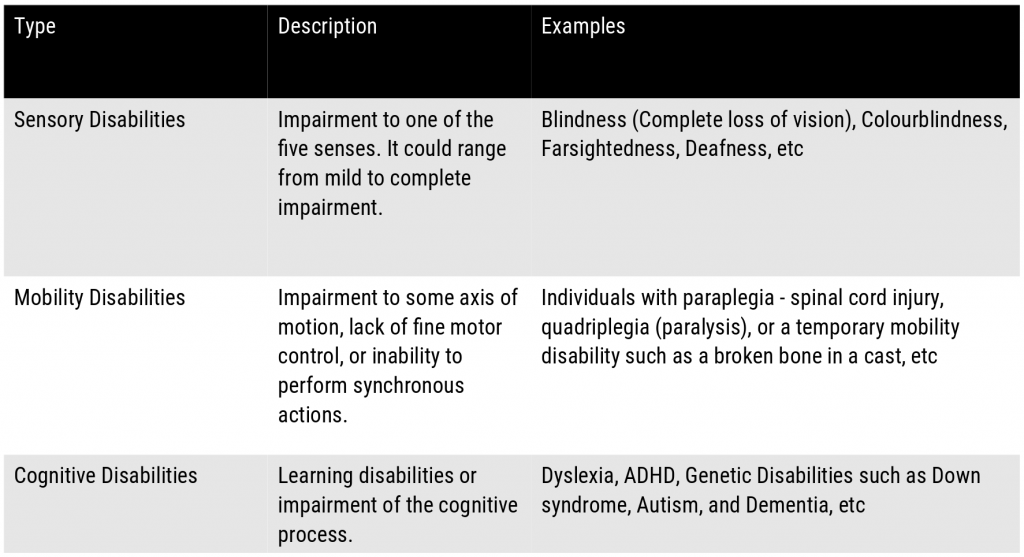
For many testers, their first and only preference to certify an application as fit for use is by running functional tests. Including me, accessibility testing has never made it to the top of my list of things to test until recently. One of the main reasons for this is due to the lack of understanding of the whole spectrum of disabilities and the varying needs of this diverse group. I have now started the Ministry of Testing’s #30daysoftesting challenge with Accessibility testing to learn more about it. My plan is also to blog about what I learn each day during this journey.
Considering 1 in 4 adults in the United States i.e. 61 Million has some kind of disability, it is much more important to prioritize accessibility testing in your test strategy to ensure your application caters to everyone.
What is Disability?
The Centers for Disease Control and Prevention (CDC) defines disability as any condition of the body or mind that makes it more difficult for the person to do certain activities and/or interact with the world around them. It is not just the impairment in a person’s body such as loss of a limb or vision but it can also be with their mind like memory loss. The other dimensions of disability include activity limitation and participation restrictions. The disability can also be characterized by when and how a person got his disability – Birth defect, an accident, side effects of a disease, or just be the natural result of aging.

Some of the disabilities that are key to the digital accessibility are listed below –

Aging and Disability
They are associated with similar characteristics of physical, sensory, and intellectual impairment. It is estimated that more than 46% of those aged 60 years and over have disabilities. And with the advancements in modern medicine and improved standard of living, the average life span has improved significantly. With this, the number of older persons has increased substantially and that growth is projected to accelerate in the coming decades. This increasing user group makes accessibility testing inevitable.

Why digital accessibility testing is important?
The power of the Web is in its universality.
Tim Berners-Lee, Inventor of the World Wide Web
Access by everyone regardless of disability is an essential aspect.
It is all about inclusiveness, and a way to ensure that no one is excluded. If your application isn’t accessible, then you are creating barriers for your users with disabilities. A 2019 study estimated that 98% of websites violated some aspects of Web Content Accessibility guidelines such as low contrast text, missing alternate texts, empty links, and empty buttons, etc. For people with disabilities, this means online dead ends. Governments all around the world now have regulations and laws that set out a process for developing and enforcing accessibility standards.
It is imperative that as Testers, we should include Accessibility as the core part of our test strategy to ensure that the applications are more accessible and inclusive.
Read more about other software testing blogs here.
What do you think about accessibility testing and its importance? Leave your comments here or on Twitter @testingchief.
Update: Special Thanks to our reader Emma Rice for sharing this article with us. It shows how disabled (differently-abled) people are almost non-existent on government and stock-photos websites, and when they are represented, they are not represented as whole individuals but are only shown for their disability.
References
- https://www.un.org/development/desa/disabilities/disability-and-ageing.html
- https://www.cdc.gov/ncbddd/disabilityandhealth/disability.html
- https://webaccessibility.visionaid.org/disability-types/
- https://www.disabled-world.com/
- https://webaim.org/projects/million/
- https://www.websiteplanet.com/blog/government-websites-exclude-disabled-men-and-women-from-non-health-related-webpages/











